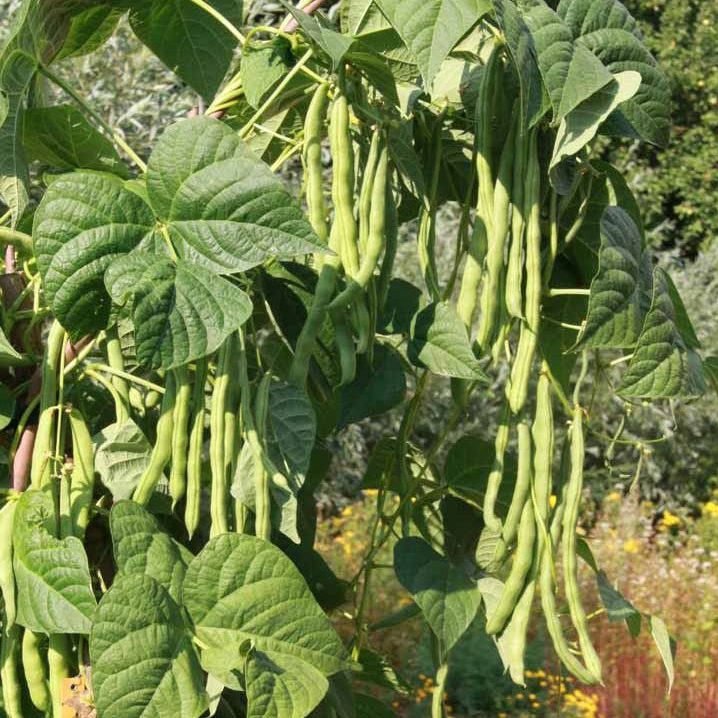As the legume season is coming to an end, at least in Europe, what better time to look back on the first year of the Global Bean project, specifically the Global Bean show gardens.
11 show gardens across 7 countries in Europe and beyond shared the advancement in their legume cultivation. Each show garden contributed over the season with its precious knowledge and specialities, and as a legume lover, enthusiast, or future enthusiast – you will surely find “a shoe to your foot” as we say in French to mean, something that fits your tastes.
Find here all the Global Bean show garden videos.
Seed preservation
Let’s start this “End of the season showgarden tour” with the Ecological Education Center ÖBZ.
This center of heirloom bean preservation and Global Bean show garden in Munich, Germany, joined us with 8 incredible videos this season, showing the growth of the 20 rare bean varieties they planted this year, along with different methods of planting beans, how to preserve their seeds and also, what their different beans taste like!
If you are interested in well-filmed videos, clear explanations and colourful legume pods and flowers, this is the show garden playlist for you.




You will also find some of their videos under the special title “Andrea’s gardening tips“, as Andrea from the ÖBZ team gives out very practical information on sowing and/or planting techniques. A good preparation for next season!
Have a look at another “seed saver’s” videos, Nikos Dompazis from Komotini, Northern Greece. He is part of the Seed Saving association Sito Seeds and the local Seed Saving Group Sporites Rodopis, and is growing three kinds of local varieties of legumes.
Global Fields and legume facts
For detailed information and facts – did you know lentils have been grown for 10000 years? – about specific legumes and their cultivation, Ekkehard Spiegel, gardener of the Global Field Berlin and part of the Global Bean team, is the one to go to.
Soon to come, a video about the trials and tribulations of the season, peanuts and a seed presentation!


Another Global Field is part of the show gardens, and namely the Global Field Attiswil, Switzerland, which shares the same concept as the Global Field Berlin.

As such, they represent the most common crops grown in the world on a space of 2000 m², including legumes!
These legumes are very lucky: they get to grow on a space that is well organized, with clean sections for the faba beans, the chickpeas, the different varieties of climbing beans, and beautifully tended to.

Follow the growth of those plants over the season, and get details on each variety!
Legumes for human consumption
Some of the show gardens have a completely different goal: growing legumes for human consumption, including some that are now mainly used for animal feed like faba beans. The ways these two show gardens – Tiny Farms, and Dani’s field – go about cultivation is however completely different.
Tiny Farms made short videos showing techniques on how to grow pole beans, and have trials and experimentations on rather unusual legumes in Germany like Edamame, as well as more “usual” ones for Europe like peas – for which Tiny Farms’s clients, high end restaurants in the region Brandenburg, have strict standards on.
Three more videos to come!
On the other hand, Dani from Alvelal, working on a 40 ha Chickpea farm in Almería, a rather harsh province of Spain in terms of weather conditions, is showing in detail how drought impacts his agricultural activity. Valuable lessons to be learned, while many European countries have been suffering from drought this year.
Amateur gardener
Jean Paul from France also planted three types of beans, and other legumes, showing their growth throughout the season!
International show gardens
The show gardens are not geographically restricted to Europe. Indeed, the organisation Seed Savers Kenya joined us with their local varieties, and so did the Global Field India. For them, the growing season is just starting, and we are very happy to welcome Amanuel Samuel from Ethiopia for the next round of Showgarden videos: they are just starting to sow out legume seeds!
Legume garden for the local community
Tanja Neuschild, working for the Food Council in Wehrda, Germany, aims to get her local community in Wehrda to come together at local “food points” around the themes linked to healthy, climate-friendly and socially-sustainable food. And one of these “food points”, is a Global Bean show garden that was built up alongside school children.
Tanja’s videos go more in detail about the planification and toughts behind this amazing project, and the process to bring it to life!
More legumes in Germany? The research institute LTZ
As you may know if you have been following the Global Bean project, one of the reasons why the project exists is that consumption of legumes in Europe is strikingly low, in comparison with other continents.
In the same effort to increase production and consumption of legumes, the Landwirtschaftliches TechnologieZentrum Augustenberg – or Agricultural Technology Centre (LTZ) leads trial on different chickpea varieties for example, to find out which legumes are the most adapted to german climates.
You will find the description of their process in clear and understandable videos.
To sum up,
there are as many ways to approach the subject of growing legumes as there are climates, point of views, countries, and people.
Ready to discover some of them? > Find here all the Global Bean show garden videos





